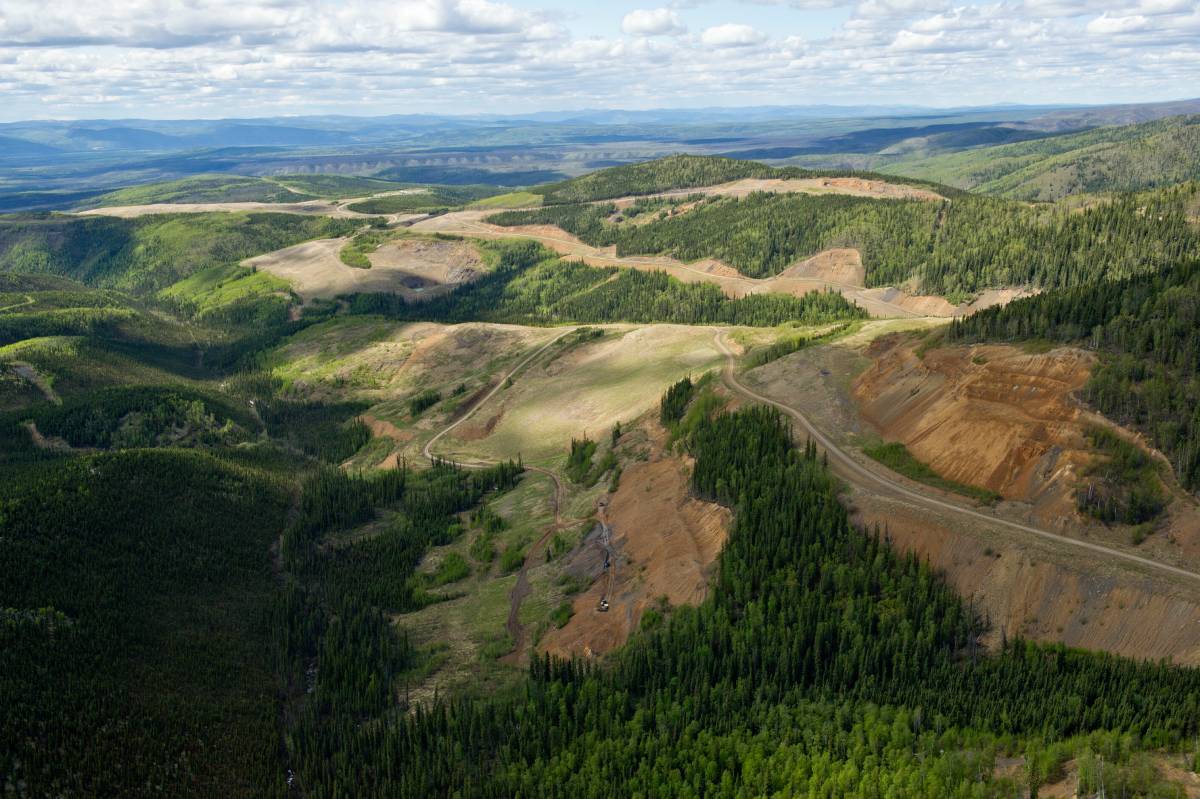The Brewery Creek property is located within the foothills of the Ogilvie Mountains along the northeastern boundary of the Tintina Trench within Selwyn Basin rocks. The Selwyn Basin rocks have been poly-deformed and imbricated by the Jura-Cretaceous Dawson, Tombstone and Robert Service Thrusts. The Hyland, Road River and Earn Group rocks are cut by Cretaceous intrusive rocks (Tombstone Plutonic Suite) that form a northwest-trending belt of widely spaced intermediate to siliceous stocks and plutons that closely parallels the Tintina Trench. In the Brewery Creek area, these igneous rocks are monzonites and quartz monzonites that primarily intruded along the thrust faults and formed sill-like geometries. Most of the gold mineralization at Brewery Creek is hosted within or adjacent to these felsic intrusive rocks. Gold is associated with carbonate/clay, quartz and pyrite/arsenopyrite alteration of monzonite/quartz monzonite intrusive rocks and adjacent siliciclastic rocks.
The Brewery Creek Project resources exhibit characteristics of both epithermal type and intrusive-related gold systems. It is generally considered to be an alkalic intrusion-associated gold deposit, as most of the mineralization is concentrated within or proximal to monzonites. Gold mineralization consists of fracture-controlled quartz stockwork in both siliciclastic and intrusive rocks along an east-northeast striking, moderately south dipping structural trend.
Altered intrusive rocks are typically the preferred host for gold mineralization, however gold mineralization at the Pacific deposit exhibits a strong preference for a siltstone host, and in other deposits into adjacent intrusions. Major ore-controlling structures in intrusive rocks are related to a post Tombstone age, NNW compressional event that produced ESE and NE striking conjugate shears and ENE listric normal faulting localized along graphitic argillite/intrusive sill contacts. Approximately 85% of the historically mined ore was hosted by the various Cretaceous-aged quartz monzonite sills with the balance contained in silicified and brecciated Earn Group sediments.
Throughout the property, Tombstone Suite (91 Ma) Cretaceous monzonite and quartz monzonite intrudes Paleozoic Earn and Road River Groups lithologies as a series of semi-comformable sills along a 15km strike length. Younger, Tombstone Suite syenite and biotite monzonite occur locally in the south-central portion of the property. All compositional phases of the Tombstone Suite intrusives are known to host gold mineralization. This suite of coeval granitic rocks is known to be associated with gold mineralization at Fort Knox in Alaska and Dublin Gulch, Clear Creek and Gold Dome (Scheelite Dome) in Yukon.
Sill emplacement is primarily controlled by a tectonized, graphitic argillite at the contact between the Earn and Road River Groups. This contact is also the locus of NNE-directed thrust faulting that has placed thin (<150 m thick) sequences of Silurian siltstone against Devonian siliciclastic rocks. The age of faulting is probably related to earlier Mesozoic compression along the Dawson, Tombstone and Robert Service Thrust Faults and the closing of the Selwyn Basin.

